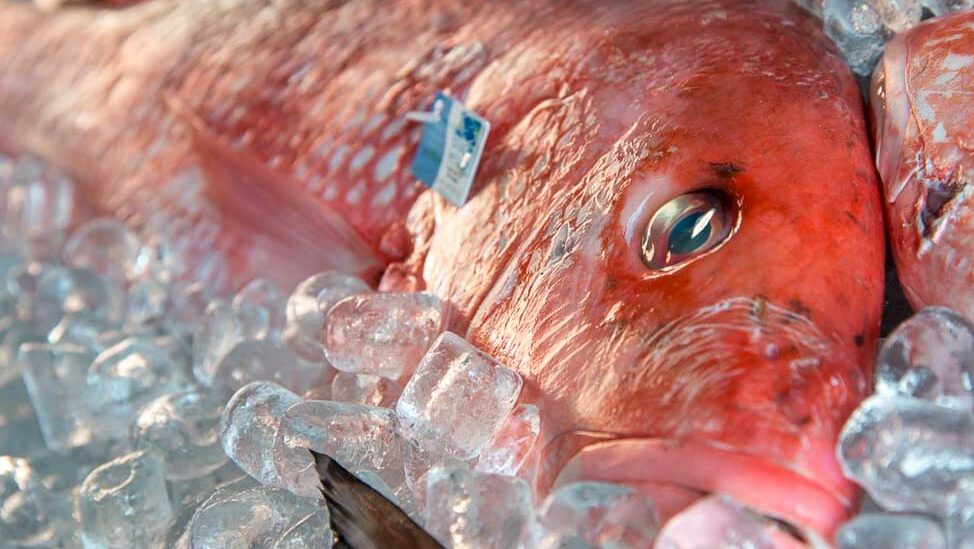What Do Anglers Think of the Great Red Snapper Count?

Researchers wanted to learn more about people’s views related to the accuracy of the count and the science behind it.
Research Need
It’s impossible to actually count all the fish in an area, often leaving the results of population surveys up for debate. This is especially true for red snapper in the Gulf of Mexico. In response to requests for more data on the counts of red snapper population, researchers there set up an entirely new system of assessing the status of the species, which they called the “Great Red Snapper Count,” to get the best estimate of the abundance of red snapper in the Gulf and, as a result, allow as much access as possible to the fishery.
Angler participation and engagement are considered key components of satisfaction overall with fisheries management. Past research has shown that satisfaction is highest when angler engagement or input is followed by meaningful action, as well as when the anticipated benefits of fisheries management are clear and realistic.
In connection with the Great Red Snapper Count, researchers wanted to learn more about people’s views related to the accuracy of the count and the science behind it. Specifically, the researchers wanted to see if certain types of video explanations for anglers would influence their knowledge and their satisfaction with the count.
What did they study?
The researchers created an online survey and worked with a commercial firm to find appropriate stakeholders in the five Gulf states (Texas, Louisiana, Alabama, Mississippi, and Florida).
Their purpose was to better understand anglers who fish for red snapper, evaluate the anglers’ satisfaction with the current red snapper regulations, evaluate anglers’ knowledge of the Great Red Snapper Count, and see if there were benefits to certain types of informational videos related to the count.
The survey had three themes: general fishing style, general attitudes and beliefs toward reef fishes, and specific attitudes and beliefs about red snapper (including the Great Red Snapper Count). Survey takers watched an overview video (top), no video, or a video about one of the four specific research topics: habitat characterization (above), direct counts (below), fishing depletion experiments, or tag/recapture studies.
The survey wrapped up with a final section measuring knowledge and satisfaction with red snapper population and regulations. (A sample question was “How would you describe your overall level of satisfaction with current fishing regulations for red snapper?”) The survey also captured demographic information.
What did they find?
Researchers found that 60% of the survey takers were aware of the Great Red Snapper Count prior to taking survey. In addition, general awareness of the Great Red Snapper Count was associated with higher satisfaction with red snapper fisheries.
Highest awareness of the count was present among the most avid and specialized anglers who consider fishing their primary outdoor activity. Lowest awareness about the count was found among those anglers who considered red snapper to be their most important target species. This contradiction could be the result of casual anglers who only fish a few times a year but focus on red snapper.
Another key finding was that awareness of the count was associated with up to three times higher satisfaction with overall fisheries management. Interestingly, anglers who watched the video on one of the four specific scientific elements of the count reported both higher scientific knowledge and higher management satisfaction than those who watched only a basic overview video or no video.
These results are consistent with other studies that have shown that videos can be effective in promoting management and conservation goals, especially if the video message is positive.
What’s Next?
Angler satisfaction is complex and multidimensional and, therefore, difficult to measure. The Great Red Snapper Count was designed to reduce public dissatisfaction with the scientific methods used to assess the health of Gulf red snapper, and this study showed a secondary benefit of increasing satisfaction through providing additional scientific information about the count.
The researchers acknowledged that the recent increases in season lengths and high catch rates also might have contributed to some degree to higher satisfaction with the Gulf red snapper regulations.
While the overview video presented comprehensive information, anglers might desire both in-depth and understandable insights into scientific methods for fish counts. Future studies also could investigate angler satisfaction with population counts for other fish species, in other geographical locations, as well as whether instructional content affects that satisfaction.
Reading
Scyphers, S. B., Drymon, J. M., Furman, K. L., Conley, E., Niwa, Y., Jefferson, A. E., & Stunz, G. W. (2021). Understanding and enhancing angler satisfaction with fisheries management: Insights from the “Great Red Snapper Count.” North American Journal of Fisheries Management, 41(3), 559–569. https://doi.org/10.1002/nafm.10579.
This study was funded by Mississippi–Alabama Sea Grant Consortium as a post-award supplement to the Great Red Snapper Count.
by Christine Ryan
Lead photo: Cesar Kastoun
The text from Hook, Line & Science is available to reprint and republish at no cost, but only in its entirety and with this attribution: Hook, Line & Science, courtesy of Scott Baker and Sara Mirabilio, North Carolina Sea Grant.
- Categories:



